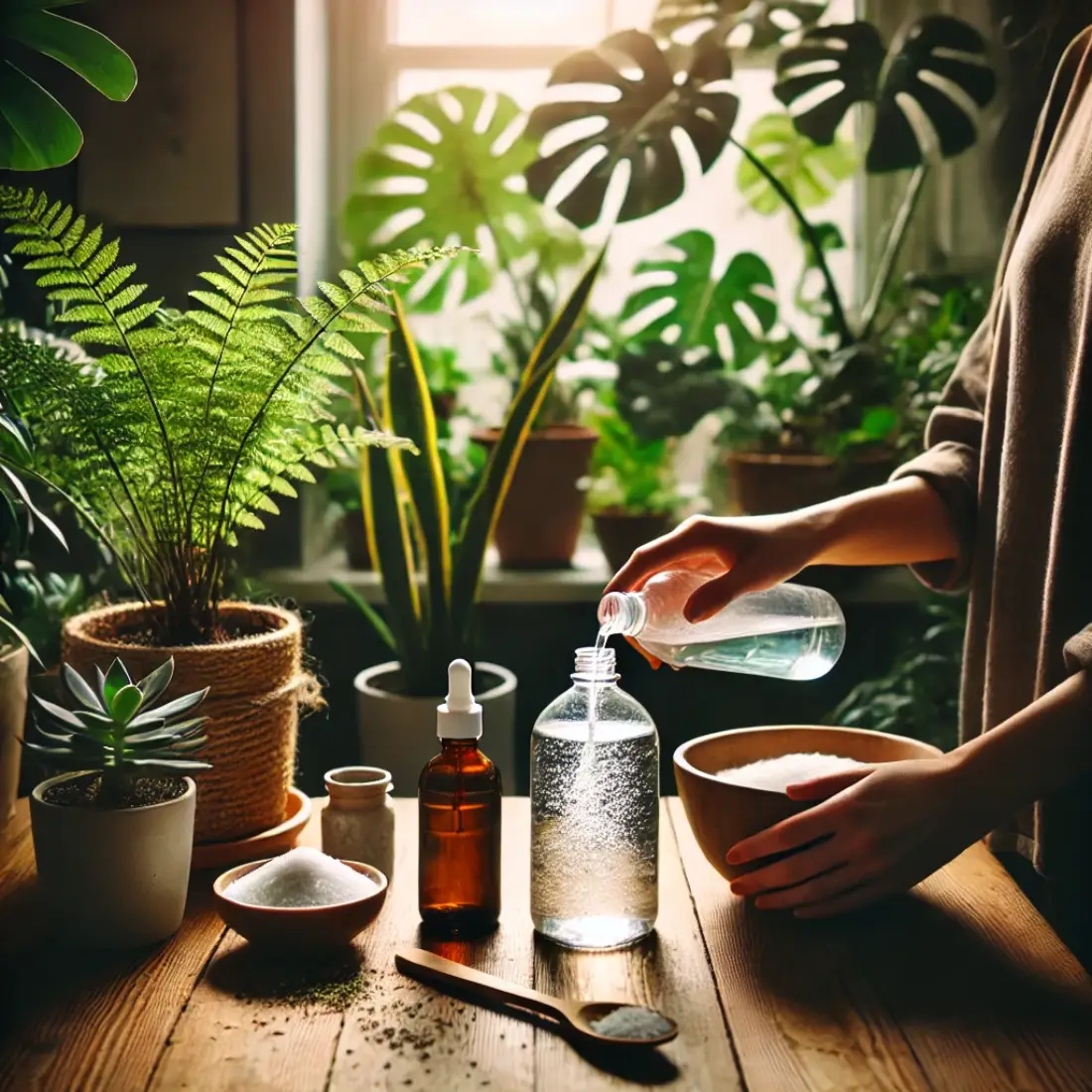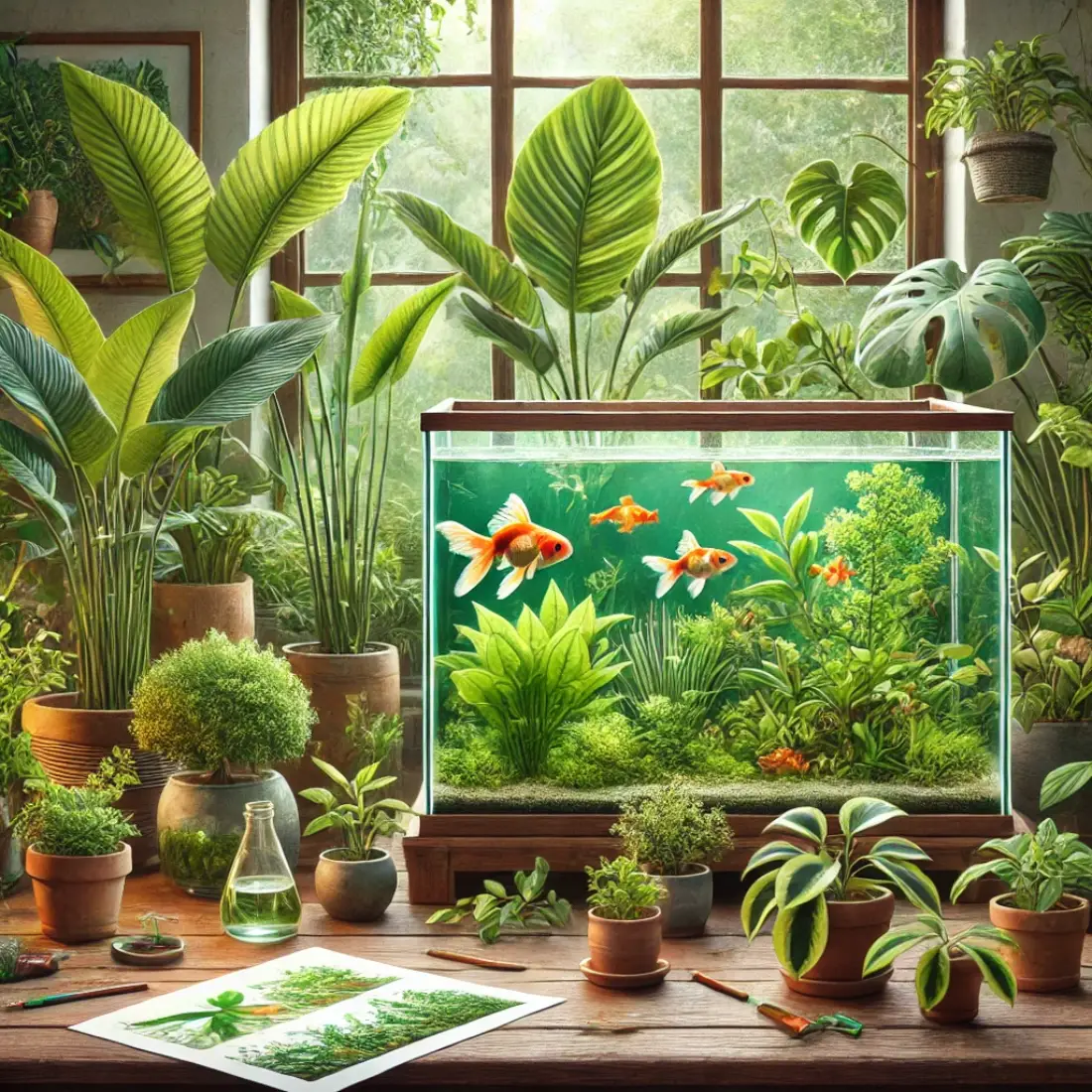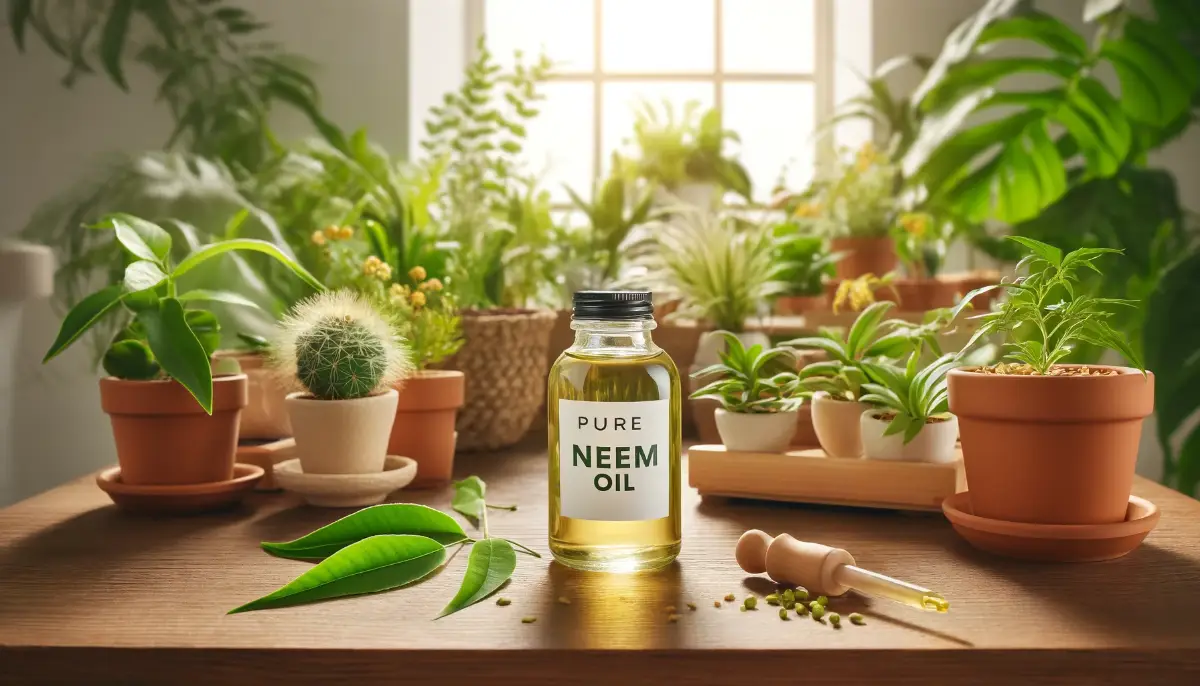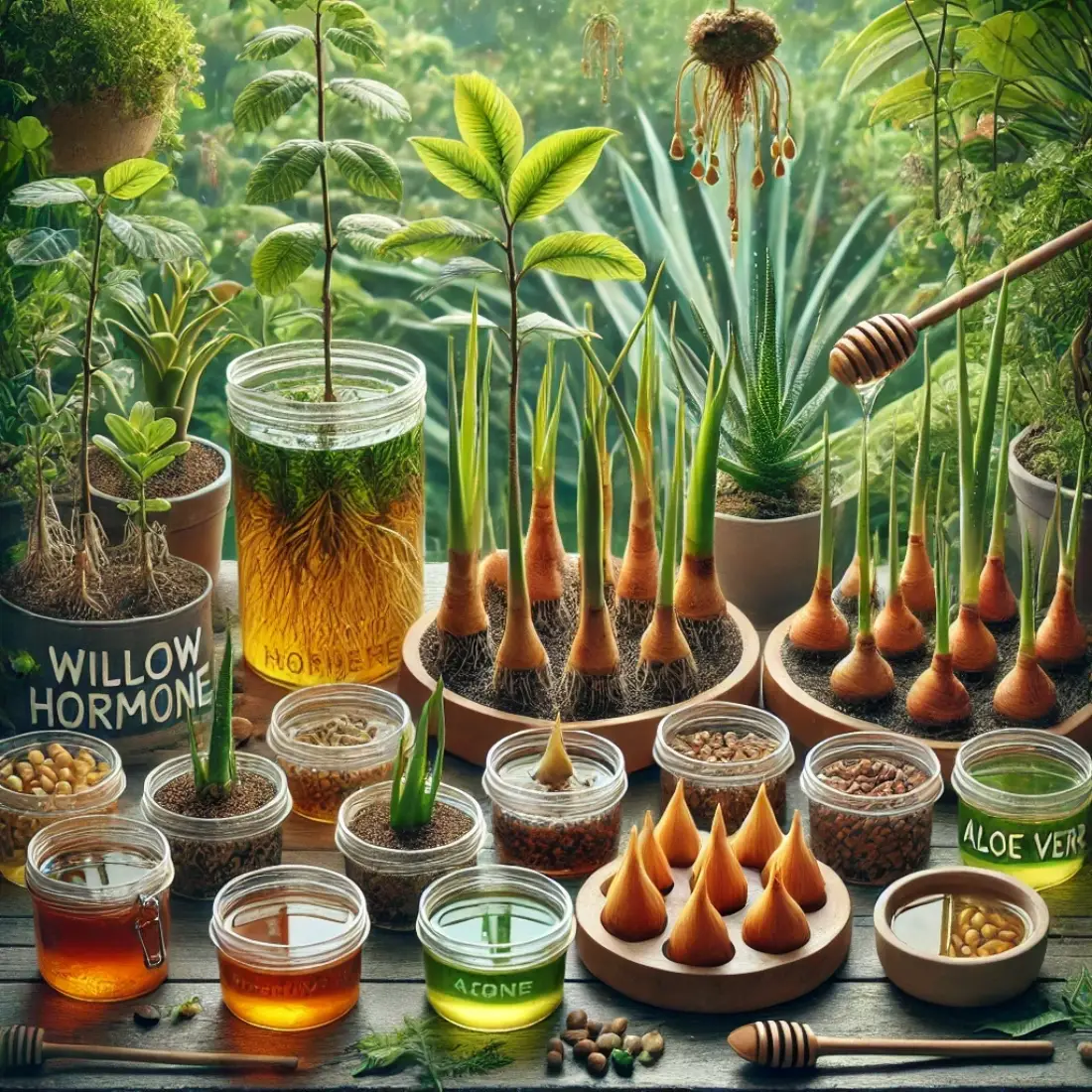Creating the best homemade foliar spray for your houseplants is a simple yet powerful way to boost their health and vitality. Foliar sprays, applied directly to the leaves, deliver essential nutrients more efficiently than traditional soil feeding, resulting in faster growth and more vibrant foliage.
By making your own foliar spray, you can customize it to meet the specific needs of your plants while avoiding harsh chemicals found in commercial products.
- Homemade foliar sprays deliver nutrients directly to the leaves, ensuring faster absorption and healthier plants.
- They are a cost-effective, eco-friendly alternative to chemical-based commercial sprays.
- Customizing your foliar spray allows you to address specific plant needs, from nutrient deficiencies to pest control.
- Applying foliar sprays correctly can enhance plant growth, improve foliage, and protect against pests.
- Learn step-by-step recipes and application tips to create the best homemade foliar spray for your houseplants.
How to Choose the Right Ingredients for Your Houseplants
Choosing the right ingredients for your homemade foliar spray is essential to meeting the specific needs of your houseplants. Start by understanding the unique requirements of your plants—some thrive on a nutrient-rich diet, while others may need a more balanced approach.
Consider Plant Type:
- Leafy Green Plants: These plants, like ferns and philodendrons, benefit from nitrogen-rich ingredients such as fish emulsion or liquid seaweed, which promote lush, green foliage.
- Flowering Plants: Plants like orchids and African violets may require additional phosphorus, so consider adding a diluted fish emulsion or a balanced organic fertilizer to your spray.
Address Specific Needs:
- Pest Control: If your plants are prone to pests, include neem oil in your foliar spray. Neem oil is a natural insecticide that helps control common houseplant pests like aphids and spider mites.
- Nutrient Deficiencies: If your plants show signs of deficiencies—such as yellowing leaves or slow growth—adding Epsom salt (for magnesium) or liquid seaweed (for trace minerals) can help correct these issues quickly.
Customize Based on Sensitivity:
- Succulents and Cacti: These plants have different needs; use a very diluted foliar spray to avoid over-fertilization, as they are more sensitive to moisture and nutrient overload.
- Test First: Always test a small area of your plant with the foliar spray to ensure there’s no adverse reaction before applying it more broadly.
DIY Recipes for the Best Homemade Foliar Sprays
Creating your own homemade foliar spray is not only easy but also allows you to tailor the mix to your plants’ specific needs. Here are three effective DIY recipes that cover general nutrient needs, pest control, and growth enhancement.
Basic All-Purpose Foliar Spray Recipe
This all-purpose foliar spray is ideal for most houseplants, providing essential nutrients to support overall growth and health.
Ingredients:
- 1 gallon of water (distilled or rainwater preferred)
- 1 tablespoon of Epsom salt (magnesium sulfate)
- 1 teaspoon of liquid seaweed or kelp extract
- 1/2 teaspoon of mild dish soap (optional, to help the spray stick to leaves)
Instructions:
- Mix the water, Epsom salt, and liquid seaweed in a spray bottle.
- Add dish soap if desired and shake the bottle gently to combine the ingredients.
- Spray evenly on the leaves of your houseplants, focusing on the undersides where pests tend to gather.
Application Tips:
- Use this spray every two weeks during the growing season for best results.
- Apply in the early morning or late evening to prevent sunburn on leaves.
Neem Oil Foliar Spray for Pest Control
This foliar spray is specifically designed to tackle common houseplant pests like aphids, spider mites, and whiteflies.
Ingredients:
- 1 quart of water (distilled or rainwater)
- 1 teaspoon of cold-pressed neem oil
- 1/2 teaspoon of mild dish soap
Instructions:
- Mix the water and neem oil in a spray bottle.
- Add the dish soap and shake well to emulsify the oil.
- Spray directly on affected plants, ensuring thorough coverage, especially on the undersides of leaves.
Application Tips:
- Apply weekly until the pest problem is under control.
- Avoid using this spray on plants exposed to direct sunlight right after application to prevent leaf burn.
Nutrient-Boosting Foliar Spray
For plants that need an extra nutrient boost, this spray combines powerful ingredients to promote vigorous growth and lush foliage.
Ingredients:
- 1 gallon of water (distilled or rainwater preferred)
- 2 tablespoons of fish emulsion
- 1 tablespoon of liquid seaweed or kelp extract
- 1 tablespoon of aloe vera juice
- 1/2 teaspoon of mild dish soap (optional)
Instructions:
- Combine all ingredients in a spray bottle and shake well.
- Apply to your plants’ leaves, making sure to cover both the tops and undersides.
Application Tips:
- Use this spray once a month during the growing season.
- It’s especially beneficial for plants showing signs of nutrient deficiency or stress.
Troubleshooting Common Issues
When using homemade foliar sprays, it’s important to troubleshoot common issues to avoid harming your houseplants.
Leaf Burn: If you notice brown or crispy edges on leaves, your spray may be too concentrated. Dilute the mixture with more water and reapply during cooler parts of the day to minimize the risk of sunburn.
Over-Application: Over-spraying can lead to nutrient buildup on leaves, causing damage. Reduce the frequency of application and rinse the leaves with water if buildup occurs.
Pest Persistence: If pests remain after applying a neem oil spray, increase the frequency of application, or consider combining with another organic insecticide.
Fungal Growth: Excess moisture from over-spraying can lead to fungal issues like mold or mildew. Ensure proper air circulation and allow leaves to dry between applications.
FAQs on Homemade Foliar Sprays
What are the benefits of using a homemade foliar spray over commercial products?
Homemade foliar sprays are customizable, cost-effective, and free from harmful chemicals. They provide essential nutrients directly to your plants and can be tailored to address specific needs such as pest control or nutrient deficiencies.
How often should I apply a foliar spray to my houseplants?
The frequency of application depends on the plant type and the ingredients used. Generally, foliar sprays can be applied every 2 weeks during the growing season. For pest control, weekly applications may be necessary until the issue is resolved.
Can I use a foliar spray on all types of houseplants?
Most houseplants benefit from foliar sprays, but some, like succulents and cacti, require more diluted mixtures due to their sensitivity. Always test the spray on a small area of the plant before full application.
Is it possible to overuse foliar sprays?
Yes, over-application can lead to nutrient buildup on leaves, causing damage such as leaf burn or fungal growth. Follow recommended guidelines and adjust based on your plant’s response.
Can homemade foliar sprays cause harm to my plants?
If not properly diluted or applied in direct sunlight, foliar sprays can cause leaf burn or other damage. It’s important to follow the recipe instructions and apply sprays during cooler parts of the day.
Do I need to wash off the foliar spray after applying it?
No, foliar sprays are designed to be absorbed by the leaves. However, if you notice residue buildup, you can rinse the leaves with water after a few hours.
Can I store homemade foliar spray for later use?
Most homemade foliar sprays can be stored for up to a week in a cool, dark place. However, it’s best to make fresh batches regularly to ensure potency and effectiveness.
What should I do if I see negative reactions in my plants after using a foliar spray?
If your plants show signs of distress, such as wilting or leaf discoloration, discontinue use immediately. Rinse the leaves with water to remove any residue and assess the plant’s recovery before reapplying.
Can I combine different ingredients in a foliar spray?
Yes, you can combine ingredients like Epsom salt, neem oil, and liquid seaweed to create a multi-purpose spray. Just ensure that the combination is suitable for your specific plant type and needs.
How do I know if my plants need a foliar spray?
Look for signs such as yellowing leaves, slow growth, or pest infestation. These are indicators that your plants could benefit from the extra nutrients or protection provided by a foliar spray.












